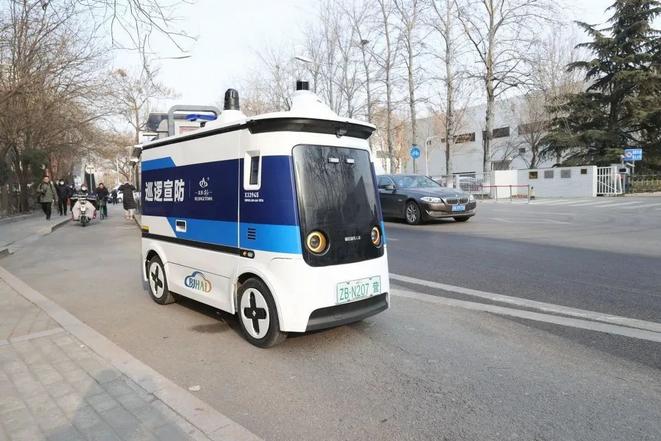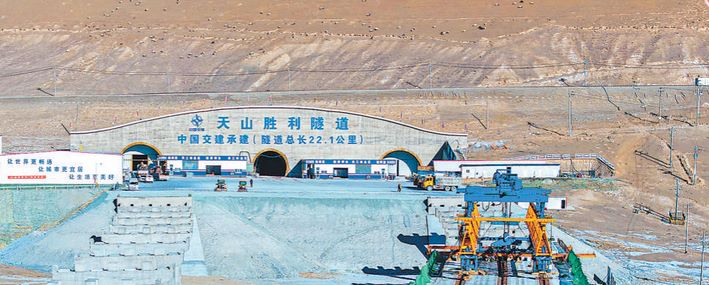Beijing develops China's first large model of atmospheric environment monitoring

Agency : On the streets of Beijing, residents may notice a uniquely designed van with sampling tubes mounted on its roof and the words "Mobile Atmospheric Monitoring" painted on its sides in Chinese.
The van is equipped with a mass spectrometer that can analyze the air it takes in and measure volatile organic compounds (VOCs) in the surrounding area within five seconds. It is reported that the VOCs data will be uploaded in real-time to the Supervision-Monitoring-Inspection (SMI) mechanism developed by the Beijing Municipal Ecology and Environment Bureau.
The bureau has also developed a large model to support the SMI mechanism, employing advanced technologies such as big data and artificial intelligence. Supported by an innovative monitoring network, intelligent analysis techniques, and an efficient dispatching system, the model has contributed to the continuous improvement of air quality in Beijing.
Data quality is essential as it forms the cornerstone and foundation of large models. To enhance the quality of data, the large model has created a multi-dimensional sensing system that boasts different functions such as aerial surveillance and ground patrols, and involves economic and social operation data such as electricity consumption. It combines over 200,000 smart sensing devices, collecting hundreds of millions of data points on a daily basis.
The large model has reportedly identified and flagged over 10,000 problems, offering effective assistance in pollution control and regular monitoring.
With the help of remote satellite sensing technology, the large model can intelligently identify more than 10 types of targets such as bare land, with an accuracy rate of 90 percent. Meanwhile, mobile monitoring vehicles can patrol the ground, measuring VOCs in real-time, achieving second-level response, intelligent traceability, and closed-loop regulation.
"The large model has incorporated over 50 types of databases, including data related to air quality monitoring and pollution sources. It also includes a database focused on environmental protection knowledge, comprising more than 1 million documents such as environmental standards, regulations, research reports, and papers," said Shen Xiu'e, head of the Beijing Municipal Ecological and Environmental Monitoring Center.
These data enable the large model to perform intelligent analysis, forecasting, precise tracing, and clue mining, Shen added.
The large model can also monitor electricity consumption at industrial facilities on a minute-by-minute basis. It can identify discrepancies in production and pollution control activities by intelligently matching and analyzing data.
"Using electricity monitoring technology, we have included over 1,000 key enterprises that emit air pollutants and more than 6,000 monitoring points into the system. If a company's production facility uses electricity while its pollution control equipment is not in operation, the system will capture and record this anomaly," Shen explained.
On June 20, the model detected that the printing machines and other production equipment of a company were running day and night, but the pollution control facilities appeared to only operate during the day and were inactive at night. After a thorough analysis, the problem was flagged and sent to
Beijing's district-level law enforcement department for further steps.
In Beijing, there is also an air pollution control platform enabled by the SMI mechanism, which is a large screen showing real-time air quality and forecast results on the left, meteorological data, pollution source data, and dispatch information in the center, and four major categories of problems including mobile sources, industrial sources, dust sources, and environmental hotspots, along with the results of targeted pollution control measures on the right.
Li Xiang, an official with Beijing's Comprehensive Law Enforcement Team for Ecological and Environmental Protection, described a case of problem detection and resolution. "The system alerted us to a high VOC concentration point near an auto repair shop, likely caused by the shop itself, so we conducted an on-site inspection," said Li.
Upon entering the shop, Li and other law enforcement officers inspected the paint spraying and baking room, discovering that some of the activated carbon filters were overdue for replacement, and there were gaps in the carbon plates, allowing untreated exhaust to escape.
The team demanded the auto repair shop to immediately rectify the issue and handed the case over to local authorities for appropriate penalties. After the corrective actions were completed, officials returned for a re-inspection, confirming that the VOC levels had returned to normal.
The air pollution control platform can rapidly assess air quality, comprehensively analyze pollution trends, intelligently trace pollution sources, coordinate resources across districts and localities, dynamically track activity levels, and thereby effectively analyze and monitor major pollution sources.
The SMI mechanism and other technologies have significantly enhanced pollution control efficiency in Beijing, helping protect and maintain the ecological environment.
According to data from the Beijing Municipal Ecology and Environment Bureau, from January to July this year, the average concentration of fine particulate matter (PM2.5) in Beijing was 33 micrograms per cubic meter. Besides, the Chinese capital recorded a total of 150 days of good air quality during the same period, an increase of 7 days from a year ago.
-By Pan Xutao, Hua Yiran, People's Daily














प्रतिकृया दिनुहोस